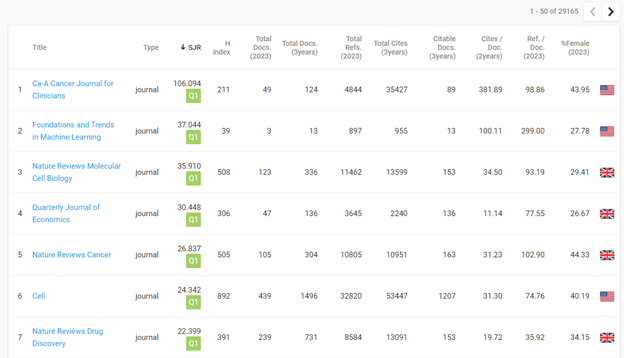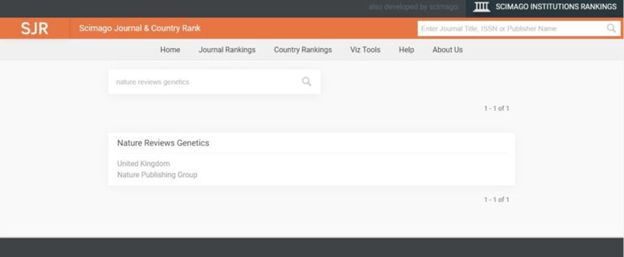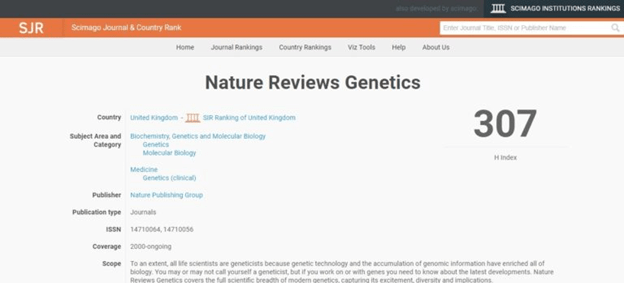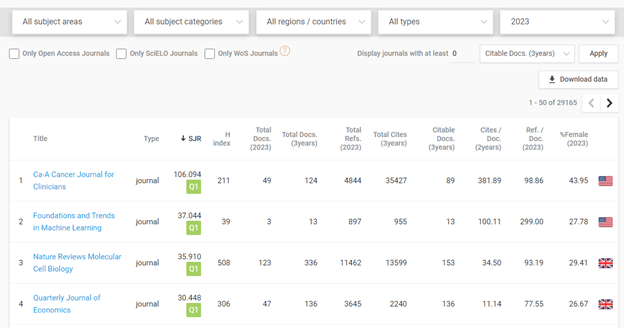Scimago Journal Ranking: How to use it?
- July 29, 2024
- Posted by: Yury Subachev, PhD
- Categories: Education and trainings, For young scientists
-
Post Views: 527
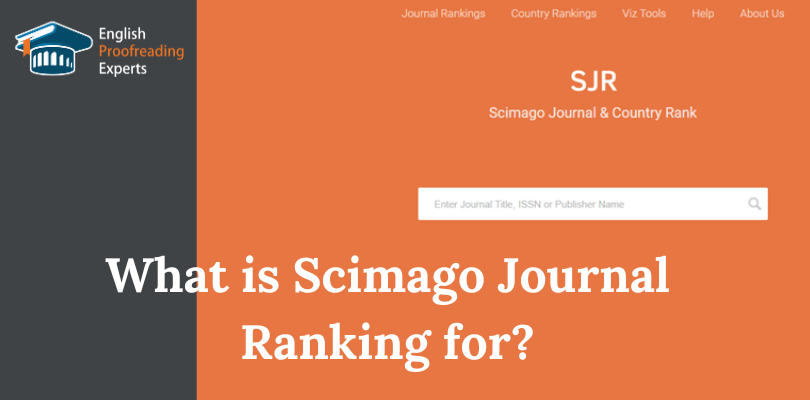
If you are looking for a journal to publish a scientific article it will be useful to familiarise yourself with Scimago Journal Ranking. This is a platform that collects data on indexed publications, analyses them and compiles ranking lists of journals in terms of credibility and relevance.
The rating provides detailed information on the prestige of every journal, including a list of important indicators with tables and diagrams; therefore, any author can get acquainted with the data and select the most appropriate option. The article gives a cue on how to use the resource and what information can be obtained from it.
Scimago Journal Ranking is an analytical platform that collects research indicators for journals according to various criteria and makes them publicly available. The portal posts publication activity ratings and citation statistics based on data collected from the Scopus database. The following indicators are taken into account:
- total number of publications;
- total citation counts;
- citations breakdown by year;
- Hirsch index.
By analysing these data, Scimago Journal Ranking confirms the authority and prestige not only of a particular journal but also of the country where it was published. Ratings are formed by indexed publications, scientific communities, universities and private organisations. One can select a particular country, institution or community and view the order in which journals are listed.
2. Criteria for forming a journal rating
International rankings are based on three indicators:
1. Evaluation of research work – based on 11 indicators borrowed from the Scopus database (total weight coefficient – 50%).
2. Innovation activity – based on 3 criteria borrowed from the PATSTAT database (total weight coefficient – 30%).
3. Social impact – based on 3 web indicators borrowed from Google and Ahrefs (total coefficient – 20%).
The information on the site is updated every six months, and anyone can read it for free. The service is in English, but it is easy to understand without advanced knowledge of the language. Scimago ratings help scientists to choose the most reputable journals for the publication of scientific papers.
When selecting an edition through Scimago Journal Ranking, researchers should pay special attention to the following criteria:
1. The journal publishes high-quality articles; it does not accept papers by novice scholars or those of a statistical nature.
2. The proceedings generate public interest and the desire to share opinions and are intended to foster discussion, which will help to increase their citation rate.
3. Self-citation is allowed to a minimal extent.
4. Many publications are co-authored with foreign scholars and executed in the international language.
5. The number of non-cited materials that cannot be quoted is insignificant.
3. What kind of journal information is reflected in the rating?
The data on any publication are given on the rating page in the form of tables and graphs. The list provides articles’ titles and types (journal or book); the rating is formed by default on the basis of the SJR indicator – this is the average number of weighted quotes for a certain year among the publications of a particular edition that were posted within the last three years. This is a kind of analogue of the impact factor used for the scientific evaluation of journals. The higher the indicator, the higher the prestige and authority of the edition.
As a next parameter, general information on the journal is provided, including the Hirsch index and quartile (shows the demand for the journal). In addition, the table allows one to view the total number of articles, the number of cited publications and references, the average number of citations and references per article as well as the country of publication of a scientific paper.
Clicking on a particular publication will open detailed statistics with charts based on Scopus data. Scimago Journal Ranking statistics (using the journal Nature as an example) show:
1. SJR indicator.
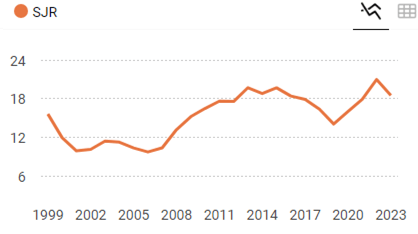
2. Total number of cites and self-cites.
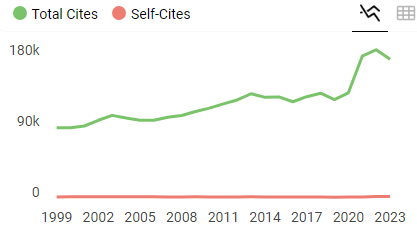
3. Total number of cites per publication and external cites.
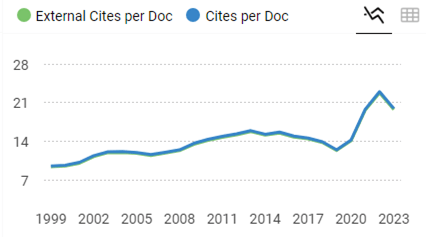
4. Ratio of the number of citations per article to the total number of articles for a period of 2, 3 and 4 years.
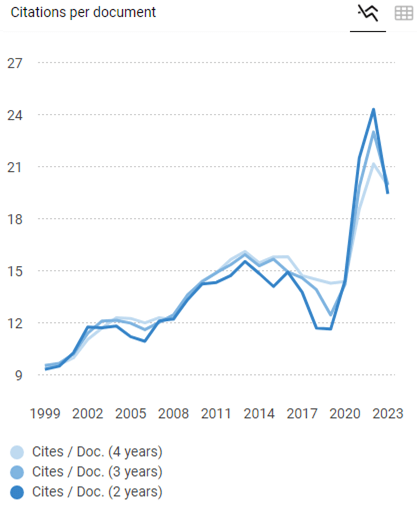
5. Number of citable and non-citable articles.
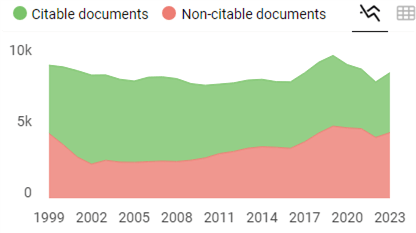
6. Number of cited and non-cited publications.
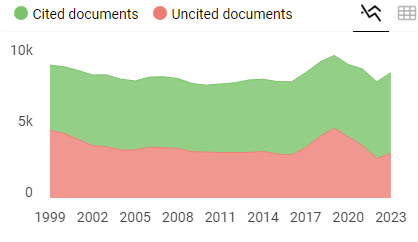
7. International cooperation.
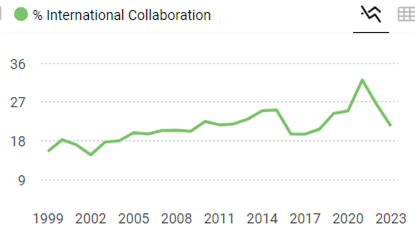
It is better to study as much information on each journal as possible before making a final choice of where to publish your research paper.
3. The way to use Scimago
To check whether a certain journal is indexed in Scopus and to view its statistics, you need to follow the steps below:
1. Go to https://www.scimagojr.com/.
2. Enter the title of the sought edition, keywords or ISSN number in the search window that appears.
3. Select the sought journal from the search results and click on it.
4. The rating page will open with a detailed description and the position of the journal in the general list.
In addition, you can search on Scimago by filter:
- research area;
- subject area;
- country/region;
- type of document (journal, book, collection);
- year of publication.
To do this, access the Journal Ranking tab from the home page:
The top of the list will show the most-rated editions. The search results can be saved in Excel spreadsheet format. To do this, click on the Download data button.
Conclusion
Scimago Journal Ranking is a convenient and useful service that makes it easy to get information on any indexed journal and select an edition for the publication of your article. The portal collects information on citation indices and other relevant indicators derived from the Scopus database, generating publisher rankings.
Although the platform is in English it is very simple to use. The entire website information is in open access – no registration or paid subscription is required. It provides detailed statistics with diagrams making it possible to assess the credibility and relevance of a particular journal or collection of articles.
When checking for journal indexing in the Scopus database, additional resort to official resources is recommended.
How useful was this post?
Click on a star to rate it!
Average rating 5 / 5. Vote count: 14
No votes so far! Be the first to rate this post.

